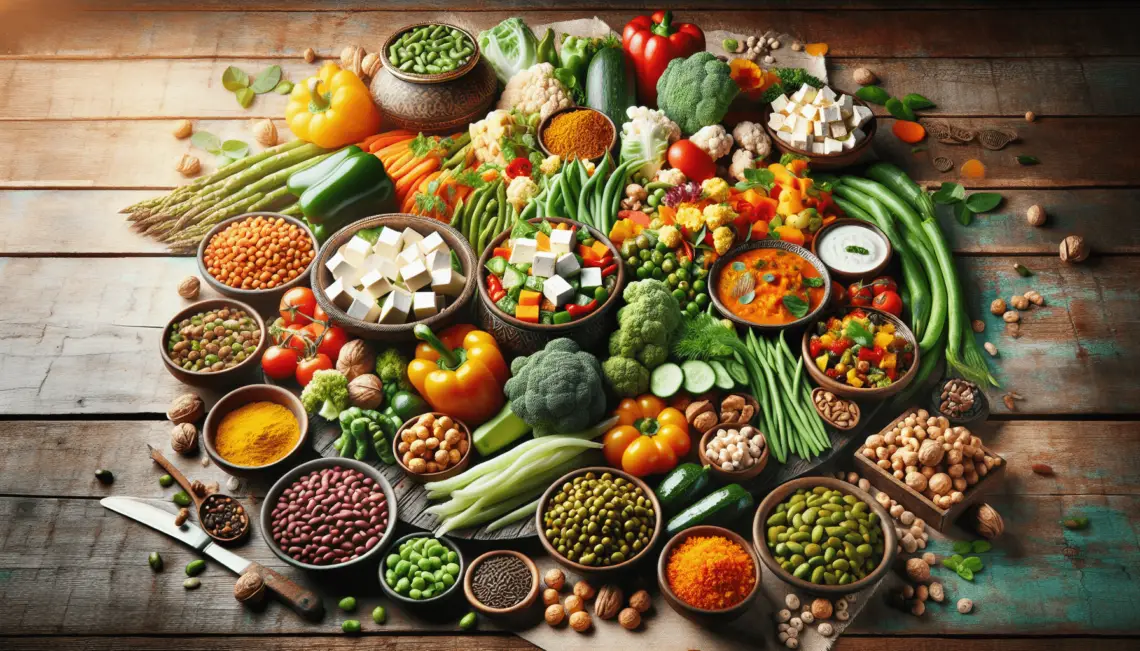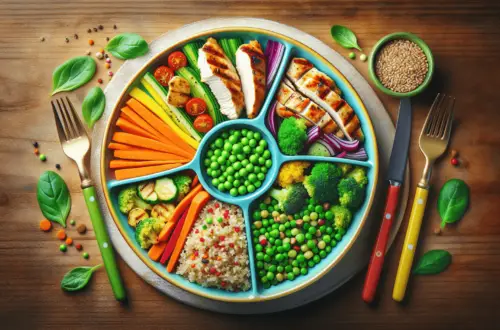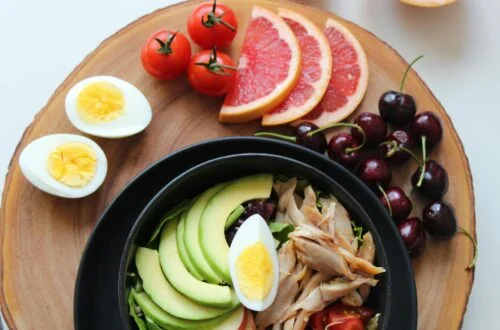In the article “Can Indians Who Are Vegetarians Successfully Follow The Atkins Diet?”, you’ll discover all about navigating the Atkins diet as an Indian vegetarian. We delve into the potential challenges and smart solutions that can help you balance your cultural dietary preferences with the low-carb, high-protein principles of the Atkins diet. By exploring Indian vegetarian ingredients that are Atkins-friendly, alongside practical meal suggestions, you’ll find a path to make this popular diet work seamlessly for you. It’s all about creating a plan that respects both your vegetarian lifestyle and your health goals.
Can Indians Who Are Vegetarians Successfully Follow The Atkins Diet?
Have you ever wondered whether a typical vegetarian diet practiced by many Indians can align with the principles of the Atkins diet? This is a pertinent question because the Atkins diet is often associated with high protein and low carbohydrate consumption, and it frequently includes a significant amount of meat and dairy. So, how feasible is it for someone on an Indian vegetarian diet, which predominantly relies on grains, legumes, vegetables, and dairy, to switch to an Atkins diet?
What is the Atkins Diet?
To answer that question, it’s crucial to first understand what the Atkins diet entails. Developed by Dr. Robert C. Atkins, this diet is known for its focus on low carbohydrate intake while maintaining high protein and fat consumption. The diet is divided into four phases:
1. Induction
This is the kick-off phase aimed at jumpstarting weight loss. You restrict your daily carbohydrate intake to 20 grams, primarily from vegetables.
2. Balancing
You gradually start to introduce more nuts, low-carb vegetables, and small amounts of fruits.
3. Pre-Maintenance
In this phase, as you get closer to your goal weight, you can add more carbs into your diet.
4. Lifetime Maintenance
This is the long-term eating plan. The idea is to maintain your new weight while enjoying a variety of foods without overindulging in carbohydrates.
Can the Atkins Diet Adapt to a Vegetarian Lifestyle?
The challenge lies in the typical Indian vegetarian diet, which is rich in carbohydrates. Roti (Indian bread), rice, lentils, and fruits are synonomous with Indian meals, and they are high in carbs.
Understanding Carbohydrate Sources
Let’s break down where carbohydrates are coming from in an Indian vegetarian diet:
| Food Group | Example Foods | Average Carb Content (per serving) |
|---|---|---|
| Grains | Rice, chapati, bread | 15-20 grams |
| Legumes | Lentils, chickpeas | 15-20 grams |
| Vegetables | Potatoes, peas | 12-15 grams |
| Fruits | Bananas, mangos | 15-25 grams |
| Dairy | Milk, yogurt | 5-10 grams |
Low-Carb Vegetarian Options
But not all hope is lost! Here are some vegetarian foods that are low in carbohydrates and high in protein and fats:
| Food Group | Example Foods | Average Carb Content (per serving) |
|---|---|---|
| Low-carb Veggies | Spinach, broccoli | 1-5 grams |
| Protein Sources | Tofu, paneer, tempeh | 2-5 grams |
| Fats | Avocado, nuts, seeds | 1-5 grams |
Understanding these values is crucial because the key to successfully adapting the Atkins diet is to swap high-carb foods with low-carb counterparts without compromising on nutrition.
How to Transition Smoothly?
Transitioning from an Indian vegetarian diet to an Atkins-friendly one doesn’t have to be an overnight upheaval. Follow these smaller steps to make the transition smoother:
Step 1: Start with Low-Carb Veggies
Begin by incorporating vegetables like spinach, cauliflower, and zucchini which are low in carbs. These can be cooked in Indian styles, making them more palatable.
Step 2: Introduce Protein Sources
Replace legumes and grains with vegetarian protein sources like paneer, tofu, and tempeh. These will keep you full while providing the necessary nutrients.
Step 3: Healthy Fats
Incorporate healthy fats through avocados, nuts, and seeds. Indian cooking often uses ghee and coconut oil, which are great sources of fat.
Step 4: Plan Your Meals
Meal planning is crucial. Prepare a weekly menu to ensure you’re meeting your nutritional needs without slipping back to high-carb habits.
Sample Meal Plans
To give you an idea of how you can craft an Atkins Vegetarian Indian diet, here are some sample meal plans for each meal of the day.
Sample Breakfast Options
| Item | Description |
|---|---|
| Palak Paneer | Spinach cooked with paneer, seasoned with minimal spices |
| Greek Yogurt | Served with a handful of berries and a sprinkle of flaxseeds |
| Scrambled Tofu | Tofu scrambled with bell peppers, tomatoes, and onions |
| Avocado Dip | Avocado mashed and served with cucumber slices |
Sample Lunch Options
| Item | Description |
|---|---|
| Cauliflower Rice | Cauliflower grated and cooked like rice, paired with mixed vegetable curry |
| Zucchini Noodles | Spiralized zucchini served with a tomato-based paneer sauce |
| Eggplant Curry | Eggplants cooked with tomatoes and spices in a low-carb gravy |
| Lettuce Wraps | Lettuce leaves stuffed with tofu or paneer, mixed with veggies |
Sample Dinner Options
| Item | Description |
|---|---|
| Vegetable Stew | Mixed veggies cooked in coconut milk and spices |
| Paneer Kebabs | Paneer chunks marinated and grilled, served with a side of low-carb salad |
| Broccoli Soup | Creamy broccoli soup made with almond milk |
| Stuffed Bell Peppers | Bell peppers stuffed with a mix of avocado and diced paneer |
Snack Ideas
| Item | Description |
|---|---|
| Mixed Nuts | A small handful of almonds, walnuts, and seeds |
| Celery Sticks | Served with a nut butter like almond or peanut butter |
| Cheese Cubes | Simple and easy to carry |
| Chia Pudding | Chia seeds soaked in almond milk with a zero-calorie sweetener |
Addressing Nutritional Concerns
When transitioning to any diet, it’s essential to keep an eye on your nutrient intake. The Atkins diet, when done correctly, can be nutritionally balanced even for vegetarians.
Protein
Ensuring adequate protein is pivotal. Paneer, tofu, Greek yogurt, tempeh, and nuts will be your primary sources. Aim for a serving in each meal to meet your daily requirements.
Fiber
Low-carb diets can sometimes be low in fiber. Focus on vegetables like broccoli, spinach, and cauliflower, and consider a fiber supplement if you’re not hitting your targets.
Vitamins & Minerals
Keep an eye on your intake of vital nutrients like iron, calcium, and B vitamins. Indian vegetarians often rely on dairy for these, but tofu and leafy greens can also be good sources. A multivitamin may also help bridge any gaps.
Potential Challenges and Solutions
Shifting to a low-carb diet from a traditionally high-carb vegetarian diet can have its challenges. However, being prepared and knowing how to address these potential issues can make the journey smoother.
Common Challenges
| Challenge | Solution |
|---|---|
| Cravings for Carbs | Have low-carb snacks on hand. Gradual reduction rather than abrupt elimination can also help. |
| Nutritional Deficiency Concerns | Ensure a balanced intake of vegetables, protein sources, and consider supplements if required. |
| Social and Cultural Pressures | Look for like-minded communities online or offline. Prepare your dishes and share them to inspire others. |
| Lack of Variety | Experiment with new recipes and be creative in the kitchen. Use different spices and herbs to keep meals interesting. |
Common Myths Debunked
There are lots of myths surrounding the Atkins diet, especially when it comes to combining it with a vegetarian lifestyle. Let’s clear out some of the common misconceptions.
Myth 1: You Can’t Get Enough Protein
It’s absolutely possible to meet your protein requirements on a vegetarian Atkins diet. Foods like paneer, tofu, tempeh, and nuts are excellent protein sources.
Myth 2: You’ll Lack Energy
While initially, reducing carbs can make you feel fatigued, your body eventually adjusts and starts burning fat for fuel. Ensuring adequate fat and protein intake can keep your energy levels stable.
Myth 3: It’s Too Expensive
While some low-carb foods can be pricey, planning and buying in bulk can help mitigate costs. Fresh vegetables, seasonal items, and local produce can also make the diet affordable.
Real-life Success Stories
To inspire you further, here are some anecdotal success stories of Indians who have adapted the Atkins diet as vegetarians.
Story 1: Priya’s Journey
Priya, a 35-year-old from Bangalore, found herself struggling with weight gain post her second pregnancy. By slowly transitioning her traditional diet to a low-carb vegetarian one, she not only lost weight but also managed to keep her energy levels high. Her go-to meals were zucchini noodles and paneer-based dishes.
Story 2: Raj’s Health Transformation
Raj, a software engineer from Pune, complained of constant fatigue and minor health issues. On the suggestion of his friend, he started the Atkins diet with a focus on Indian vegetarian foods. Within months, he noticed significant improvements in his energy levels and overall well-being.
Story 3: Ananya’s Experience
Ananya, a college student from Delhi, initially found it challenging to combine her love for traditional Indian foods with the Atkins diet. However, by finding creative recipes and making gradual changes, she achieved a sustainable lifestyle that suited her nutritional needs and activity level.
Conclusion
In conclusion, vegetarians in India can indeed successfully follow the Atkins diet with some thoughtful planning and creativity. You don’t have to give up your favorite foods; you can adapt them to fit into the low-carb framework. The most crucial part is to transition slowly, keep a diverse diet to meet all your nutritional needs, and be prepared to experiment with your meals.
Remember, any diet should feel sustainable for the long term, not just a quick fix. By making informed choices and with a bit of creativity, you can navigate this path effectively and enjoy the benefits of a healthy, balanced lifestyle. So, are you ready to give the vegetarian Atkins diet a shot? With the right approach, it might just be the change you’ve been looking for!





